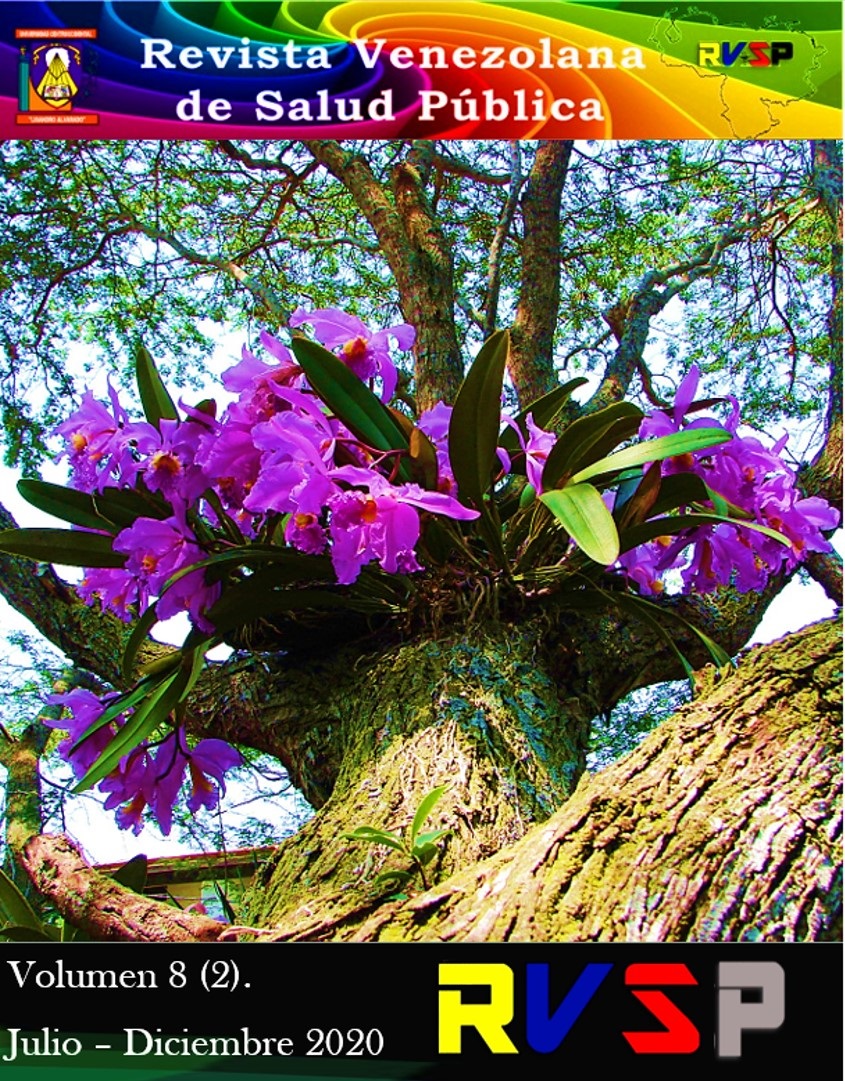Medical responsibility in the patient with a brain accident in an emergency room
Keywords:
Responsibility, diagnosis, c, cerebrovascular, emergenciesAbstract
The objective was to describe the responsibility in the diagnosis of the patient with cerebrovascular accident in the General Hospital Guasmo Sur. The design was qualitative and interpretive. The method was chosen because this way we can describe the problem based on the participant's opinion and perspective in relation to their experiences. The key informants were four people; between resident doctors and medical interns who work in the study hospital; Open interviews were carried out as a data collection technique, which were recorded in audio and transcribed so that each of the participants could then review and approve it to proceed with the study. Scientific rigor was also carried out through informed consent and ethical considerations. The results are analyzed through the construction of categories and codes, for the formation of the theoretical approach. It was concluded that the responsibility in the diagnosis and treatment of the patient with cerebrovascular accident in the General Hospital Guasmo sur is evidenced by a lack of protocols of action and ignorance of this, by the lack of commitment, interest and a negative attitude on the part of the health personnel; And to this is added poor organizational management that does not provide the necessary support to your health team.
Downloads
References
2. Millan. Valores del médico para un ejercicio de calidad: profesionalismo. FEM (Ed. impresa) 2014. vol.17. P: 1-12.
3. Khathaami A.. Aloraini H. Knowledge and Attitudes of Saudi Emergency Physicians toward t-PA Use in Stroke, Hindawi Neurology Research International. Volume 2018, pages 1-7.
4. OMS. Las 10 principales causas de defunción. [Internet]. 24 de mayo de 2018. [Consultado 1 septiembre 2019]. Disponible en: https://www.who.int/es/news-room/fact-sheets/detail/the-top-10-causes-of-death
5. INEC. Nacimientos y defunciones 2017. [Internet]. junio de 2018. [Consultado 1 septiembre 2019]. Disponible en: https://www.ecuadorencifras.gob.ec/documentos/web-inec/Poblacion_y_Demografia/Nacimientos_Defunciones/2017/Presentacion_Nac_y_Def_2017.pdf
6. Hayes M., Schlundt D., Bonnet K. Tales from the Trips: A Qualitative Study of Timely Recognition, Treatment, and Transfer of Emergency Department Patients with Acute Ischemic Stroke. Elsevier Journal of Stroke and Cerebrovascular Diseases, 2019. Vol.33. P: 1-10.
7. Ministerio de Salud Publica. Estatuto Orgánico Gestión organizacional Por Procesos De Hospitales. [Internet]. septiembre de 2017. [Consultado 5 septiembre 2019]. Disponible en: https://www.salud.gob.ec/wp-content/uploads/2019/04/ESTATUTO-GESTION-ORGANIZACIONES-HOSPITALES-RO-339-25-09-2017.pdf
8. Fekadu G., Chelkeba L. Burden, clinical outcomes and predictors of time to in hospital mortality among adult patients admitted to stroke unit of Jimma university medical center: a prospective cohort study. Fekadu et al. BMC Neurology (2019) p. 19:213
9. Fekadu G., Adola B., Mosisa G. Clinical characteristics and treatment outcomes among stroke patients hospitalized to Nekemte referral hospital, western Ethiopia. Elsevier, Journal of Clinical Neuroscience. (2019). P: 1-7.
10. Coello P., Ezquerro O., Fargues I. Investigacion cualitativa. En: Meléndez Valdés. Investigación basada en evidencia. Hacia la excelencia en los cuidados. Primera edición:2004. Difusión Avances de Enfermería (DAE, S.L.) Madrid-España. P: 48-56.
11. Mendieta G. Informantes y muestreo en investigación cualitativa. Investigaciones Andina, 2015. vol. 17, núm. 30, pp. 1148-1150.
12. Noreña A., Alcaraz N., Rebolledo D., Aplicabilidad de los criterios de rigor y éticos en la investigación cualitativa. AQUICHAN. 2012, VOL. 12 Nº 3. 263-274.
13. Taylor SJ., Bodgan R., El trabajo con los datos y el análisis de los datos en la investigación cualitativa. Análisis Introducción a los métodos cualitativos de investigación. 1ª Edición. Argentina, Buenos Aires. Ediciones Paidos; 1987. P: 152-175
14. Arias F. Técnicas e instrumentos de recolección de datos. El proyecto de investigación: Introducción a la metodología científica. 6ª Edición. Caracas – Venezuela. Editorial Episteme; 2012. P: 67-75.
15. Illanes S., Diaz V. Manejo inicial del accidente cerebrovascular (ACV) isquémico agudo. Los detalles hacen la diferencia. Rev Hosp Clin Univ Chile 2008; 19: 119 – 26
16. Camejo C. Unidad de ACV en el Hospital de Clínicas: comportamiento clínico-epidemiológico de los pacientes con ACV (2007-2012). Arch. Med Int [online]. 2015, vol.37, n. 1, pp.30-35. ISSN 0250-3816. Disponible en: http://www.scielo.edu.uy/scielo.php?script=sci_abstract&pid=S1688-423X2015000100006&lng=es&nrm=iso
17. Burbano A., Cevallos G., Protocolo Para El Manejo Del Accidente Cerebro Vascular (Acv). Uso De Citicolina. Rev. Inv. Acad. Educación ISTCRE. 2019. Vol.3 (1): pag. 86 – 87.
18. Gonzalez P., Janaudis M., Rozenfeld M., Un nuevo humanismo médico: la armonía de los cuidados. Aten Primaria. 2006;38(4):225-9.
19. Restrepo L., Diagnóstico del ACV con neuroimágenes. Acta Neurol Colomb 2006;22:31-41.
20. Hernandez E., Guarin E., Lora F., Trombólisis intravenosa en pacientes con accidente cerebrovascular isquémico: Experiencia de un Hospital del Caribe Colombiano. Acta Neurol Colomb. 2017; 33(1): 3-7
21. Borrell F., Compromiso con el sufrimiento, empatia y dispatia. Med. Clin (Barc) 2003, 121 (30): 785-6.
22. Marmesat F. La calidad asistencial, in compromiso del médico. Revista de la SEMG. Nº 60 - 2004 - pág 45 - 46.
23. Wang Y., Alvarez G., Salinas R. Análisis del cumplimiento de la Guía Clínica del AUGE en pacientes con accidente cerebrovascular isquémico: la utilización de tecnología sanitaria de diagnóstico para prevención secundaria en un hospital público. Rev Med Chile 2011; 139: 697-703.
Published
How to Cite
Issue
Section
Derechos del/de autor/es a partir del año de publicación
Esta obra está bajo la licencia:
Creative Commons Reconocimiento-NoComercial-CompartirIgual 4.0 Internacional (CC BY-NC-SA 4.0)
Las opiniones expresadas por los autores no necesariamente reflejan la postura del editor de la publicación ni de la UCLA. Se autoriza la reproducción total o parcial de los textos aquí publicados, siempre y cuando se cite la fuente completa y la dirección electrónica de esta revista. Los autores(as) tienen el derecho de utilizar sus artículos para cualquier propósito siempre y cuando se realice sin fines de lucro. Los autores(as) pueden publicar en internet o cualquier otro medio la versión final aprobada de su trabajo, luego que esta ha sido publicada en esta revista.



